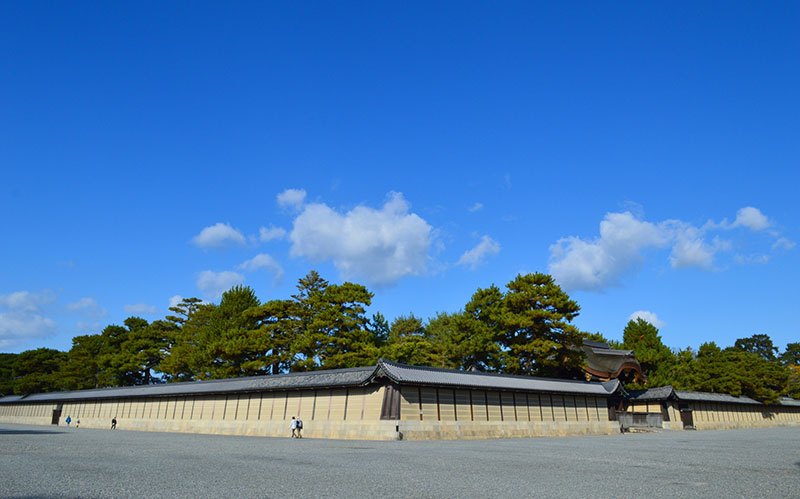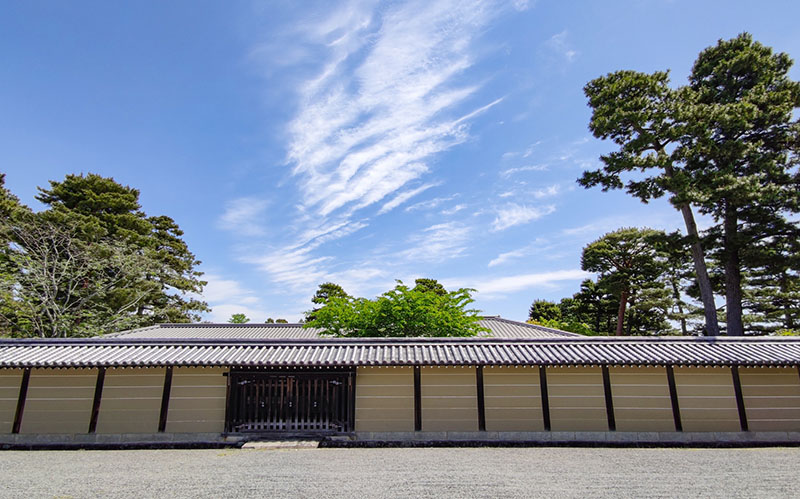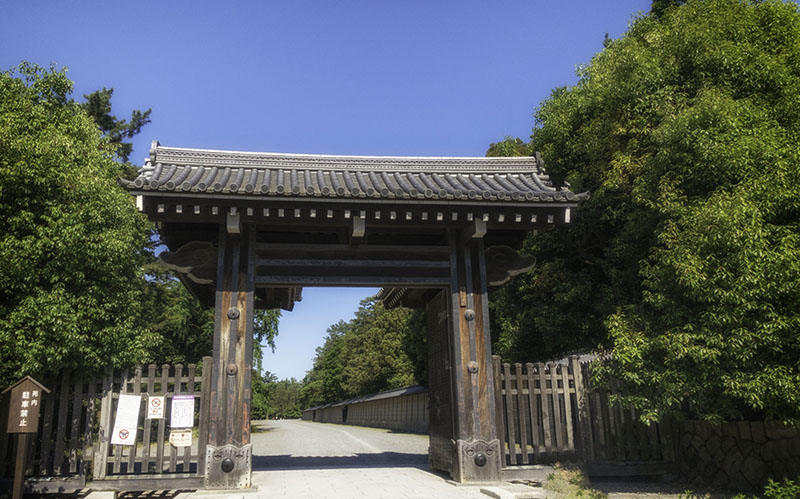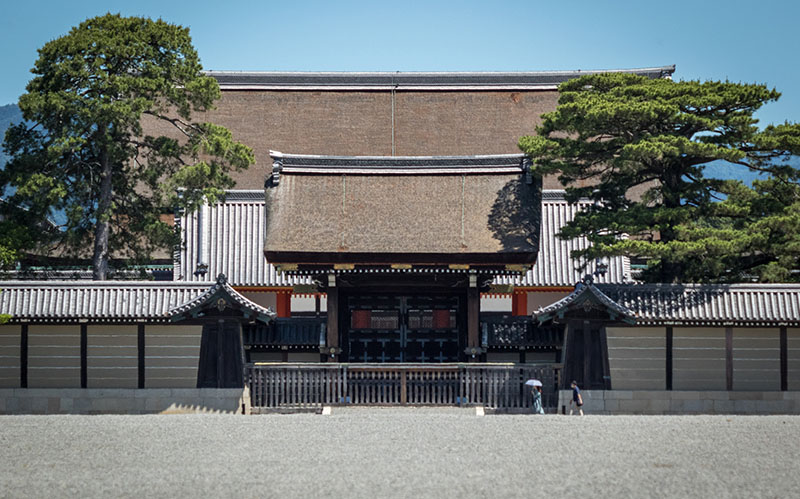- The “Kyoto Imperial Palace” has been the Emperor’s residence for about 540 years.
- Introduction to the buildings of the “Kyoto Imperial Palace
- Other facilities in Kyoto Gyoen
- Access to Kyoto Imperial Palace
- Parking around Kyoto Imperial Palace
- Kyoto Imperial Palace Official Website
- Recommended around Kyoto Imperial Palace
The “Kyoto Imperial Palace” has been the Emperor’s residence for about 540 years.
The Kyoto Imperial Palace is an imperial family-related facility located in Kamigyo-ku, Kyoto City, Kyoto Prefecture, on the grounds of the Kyoto Imperial Garden, a national park managed by the Ministry of the Environment.
The current Imperial Palace is located in Tokyo, but before the Meiji Restoration, the Imperial Palace was located in Heian-kyo (the capital of Japan from 794 to 1869, now the city of Kyoto), and the current Kyoto Imperial Palace was originally located on the site of Tsuchigomon Higashinotoin-den, the Emperor’s sato-uchiura (Satodaeri, the residence of the Emperor outside Heian Palace Nairi, a temporary imperial palace).


This plot of land in Tsuchigomon-higashinotoin-den became the original form of the present Kyoto Imperial Palace.
In 1336, during the period of the Northern and Southern Dynasties (1336-1392), Emperor Kogon designated the area as the Imperial Palace, and after the unification of the Northern and Southern Dynasties in 1392, the area officially became the Imperial Palace.
Since then, Tsuchimikadoin-den has been reconstructed and maintained as the Imperial Palace by the government of the time.
After the Meiji Restoration, Emperor Meiji ordered the Imperial Household Ministry (the predecessor of the Imperial Household Agency established in 1949) to preserve the Kyoto Imperial Palace.
In addition, the accession ceremonies of Emperor Taisho (1915) and Emperor Showa (1928) were held at the Kyoto Imperial Palace (His Majesty the Emperor and the current Emperor are held at the Imperial Palace in Tokyo).
Introduction to the buildings of the “Kyoto Imperial Palace
Most of the buildings in the Kyoto Imperial Palace today were reconstructed in 1855 and continue the style of the building when it was rebuilt in 1790.
The following are some of the buildings that must be seen when visiting the Kyoto Imperial Palace.
Shishinden
First is the Shishinden Hall.
This is the main hall of the Kyoto Imperial Palace, where the most important ceremonies were held, including the emperor’s ceremonial robes, the coronation of the crown prince, and accession to the throne.
The roof is covered with a traditional hiwadabuki (cypress bark roofing) technique.
Inside, he emperor sits on the “Takamikura(high throne)” and the empress sits on the “Michoudai(Imperial register table)”.
Seiryouden
Next is the Seiryouden.
Seiryouden is the place where the emperor lived his daily life (gradually becoming a place for ceremonies).
Inside is the “Goshodai” used by the emperor when he rested, and in front of the Goshodai are a guardian dog and a lion.
Otsunegoten
The last is Otsunegoten.
Otsunegoten was the place where the emperor lived, replacing Seiryoden.
The present Otsunegoten was rebuilt in 1855, but it is said that the first Otsunegoten was built by Toyotomi Hideyoshi.
It is said that 16 emperors from Emperor Goyozei to Emperor Meiji (107th to 122nd) spent their time here.
Other notable sites include the “Morodaiyu-no-Ma,” which was once a waiting room for visitors to the palace, and the “Kogosho,” where the Kogosho Conference (where the treatment of Yoshinobu Tokugawa was decided after his return to the Grand Council of State) was held in 1868.


Other facilities in Kyoto Gyoen
Kyoto Gyoen is a huge 65-hectare park (approximately 700 m east to west and 1,300 m north to south), which includes not only the Kyoto Imperial Palace but also other facilities and remains.
Facilities that can be visited include the Kyoto State Guest House, the Kyoto Sento Imperial Palace, and the Kaninnomiya teiato Palace Site Storage and Exhibition Hall.
However, some facilities require reservations, so please make sure to make one.
Other sites that can be seen include the remains of residences of the imperial family and court nobles, and the “Hamagurimikado” (second gate from the south on the west side of the Kyoto Gyoen), which still bears the gunshot wounds from the Forbidden Monument Incident (1864).
Access to Kyoto Imperial Palace
3 Kyoto Gyoen, Kamigyo-ku, Kyoto, 602-0881, Japan
- Get off at Imadegawa Station on Subway Karasuma Line
- Get off at Demachiyanagi Station on Keihan Electric Railway
- Get off at Karasuma-Imadegawa Sta. on the city bus.
Parking around Kyoto Imperial Palace
Kyoto Imperial Palace Official Website
Official Website : https://sankan.kunaicho.go.jp/english/guide/kyoto.html
